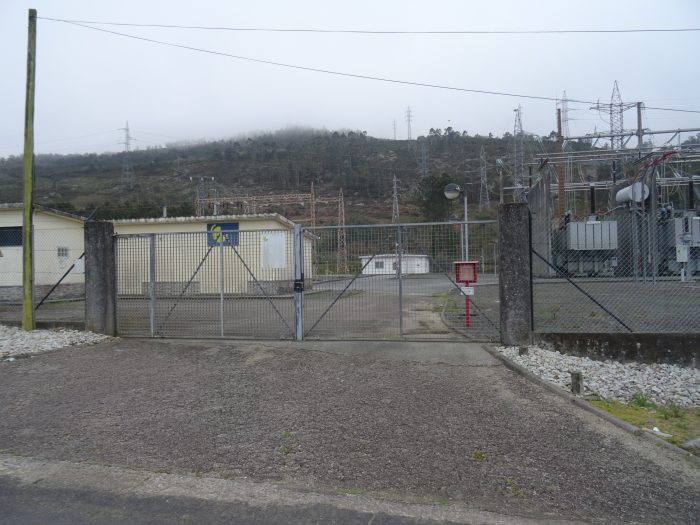
-
Facultade de Económicas
Universidade de Vigo
-
observatorio.eolico@uvigo.gal
-
Vimianzo, Leader in installed Wind Power Capacity in the Galician Province of Coruña
- Home
- Wind Energy in Galicia
- Vimianzo, Leader in installed Wind Power Capacity in the Galician Province of Coruña

- by OEGA
- 0 Comments
The Observatorio Eólico de Galicia (Galician Wind Power Observatory, hereinafter GWO) recently participated in an informative discussion on the economic aspects of the construction of the Monte de la Croa wind farm in Vimianzo. This event, organized by the Plataforma Vendaval Costa da Morte (Costa da Morte Windstorm Platform) in collaboration with the local government of Vimianzo, shed light on various aspects of the project.
Background
The various communities living in Vimianzo are well-acquainted with wind power as a source of energy. Home to five wind farms providing almost 130 MW, Vimianzo is the municipality with the largest installed wind power capacity in the Galician province of Coruña. Only three towns in the province of Lugo— Muras, Abadín and Ourol—outperform Vimianzo within the region. Among the wind farms located in Vimianzo, Monte Redondo is awaiting a repowering permit after receiving a positive environmental impact assessment, while Barrigoso stands out as a unique farm owned by the local government. Until 2019, the installed capacity in Vimianzo stood at 52.5 MW. However, with the construction of the Miñón and Tourado-Eixe farms in 2019 and the Tourado farm in 2022, the capacity has since increased to 130 MW.
In the meeting held last week, the GWO shared the estimated turnover of the five wind farms in Vimianzo to date. The turnover of the first two wind farms amounted to EUR 12 million until 2019 but increased to EUR 45 million after 2022, despite reductions in electricity production, following the construction of the other three farms.

The New Wind Farm
The construction of the Monte da Croa wind farm has been authorized by the Galician Regional Government, with a declaration of public use already applied for. The farm will feature seven wind turbines providing 27 MW. Covering a swept area of 14,500 m2 at a height of 180 m (the height of the blade tips), the farm represents a significant investment of almost EUR 28 million. The estimated annual output is close to 95 GWh, with an operating time of almost 3,500 hours/year, showcasing unprecedented productivity in the Soneira area.
The economic terms offered by the company fall significantly below the Galician average and are far from those of the most generous contracts signed in recent months. The company proposes an annual payment of EUR 0.95 /m2 for freehold on the land and road use, and EUR 0.47/m2 for the right of way. When considering all the affected goods and rights, the total compensation offered by the company amounts to EUR 182,000 for the first year of operation. Calculating the turnover of the wind farm based on the price of electricity, the income earned by local landowners would range between 1.12% (at the 2022 price) and 3.70% of turnover (at the 2020 price).
What the Company Would Stop Paying
During the advisory process, the GWO highlighted that the territorial impacts of this wind farm would exceed 90 hectares when considering the change in urban qualifications and 775 hectares when calculating the exclusion zones for competitors. These impacts are governed by Law 8/2009, which regulates wind exploitation in Galicia. Consequently, owners in Vimianzo and Dumbría, the municipality where the substation will be located and through which part of the easements will pass, stand to lose present and future rights. However, the promoting company’s list of affected assets and rights only includes 23.56 hectares.

GWO Recommendations
The Observatory presented figures common in contracts signed in recent months in Galicia. The most significant is the annual price of EUR1.36 per square meter for full ownership and EUR 0.85 for easements. Some companies are paying from the moment of contract signing, without waiting for construction or commissioning of the wind farm. Additionally, a fixed billing rate of 2.75% for owners is proving to be an attractive option.
GWO advocates for negotiating contract conditions collectively to avoid individual agreements that disproportionately benefit promoters and harm local communities. It recommends municipalities aggregate local interests and emphasize collective negotiation, considering contracts with safeguard clauses, such as the one designed by the GWO, to protect neighborhood interests.
Our focus is on strengthening the position of rural communities without impeding wind farm development. Companies that pay upfront and offer larger sums, even with fewer operating hours, indicate the potential for fairer participation of local communities.
The local community must recognize that wind farms are permanent fixtures in our villages. Hasty decisions are ill-advised. When rural citizens unite and negotiate together, opportunities for improving outcomes for local communities are greatly enhanced.